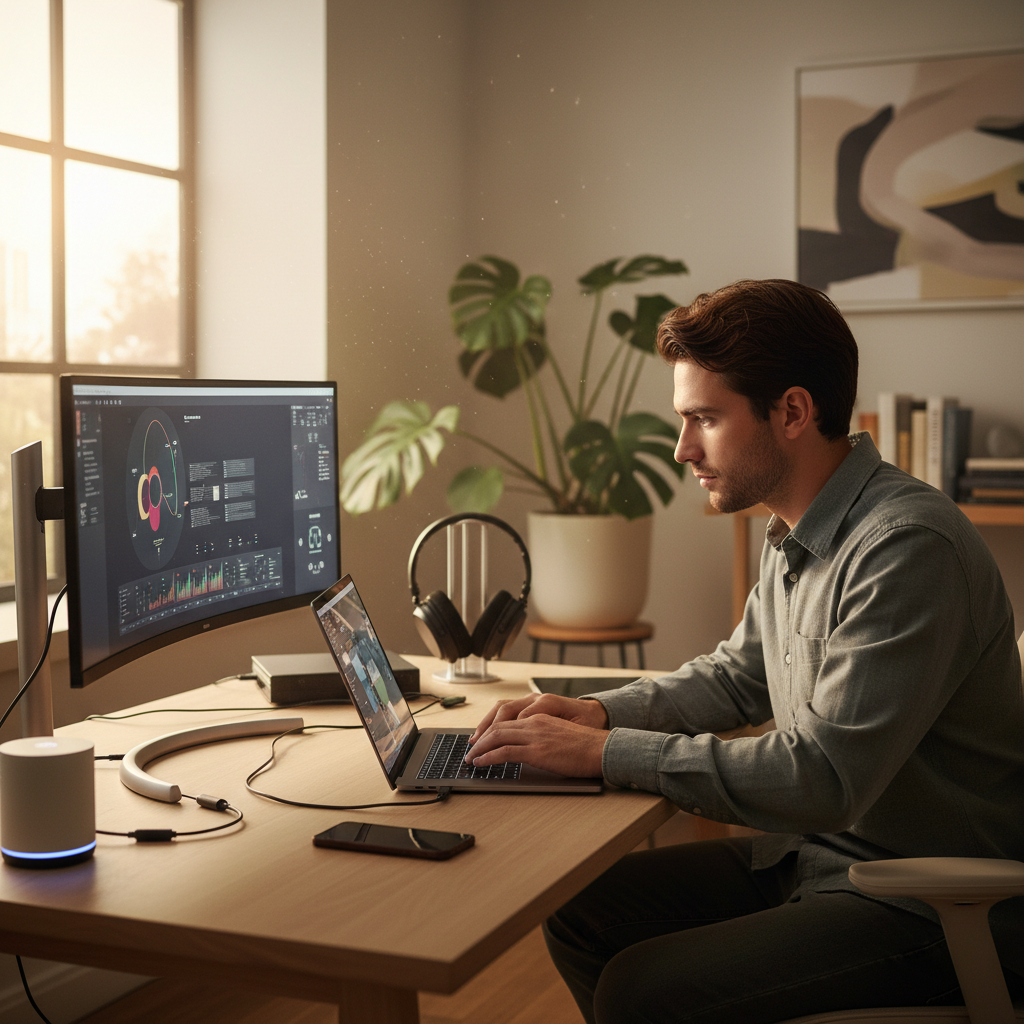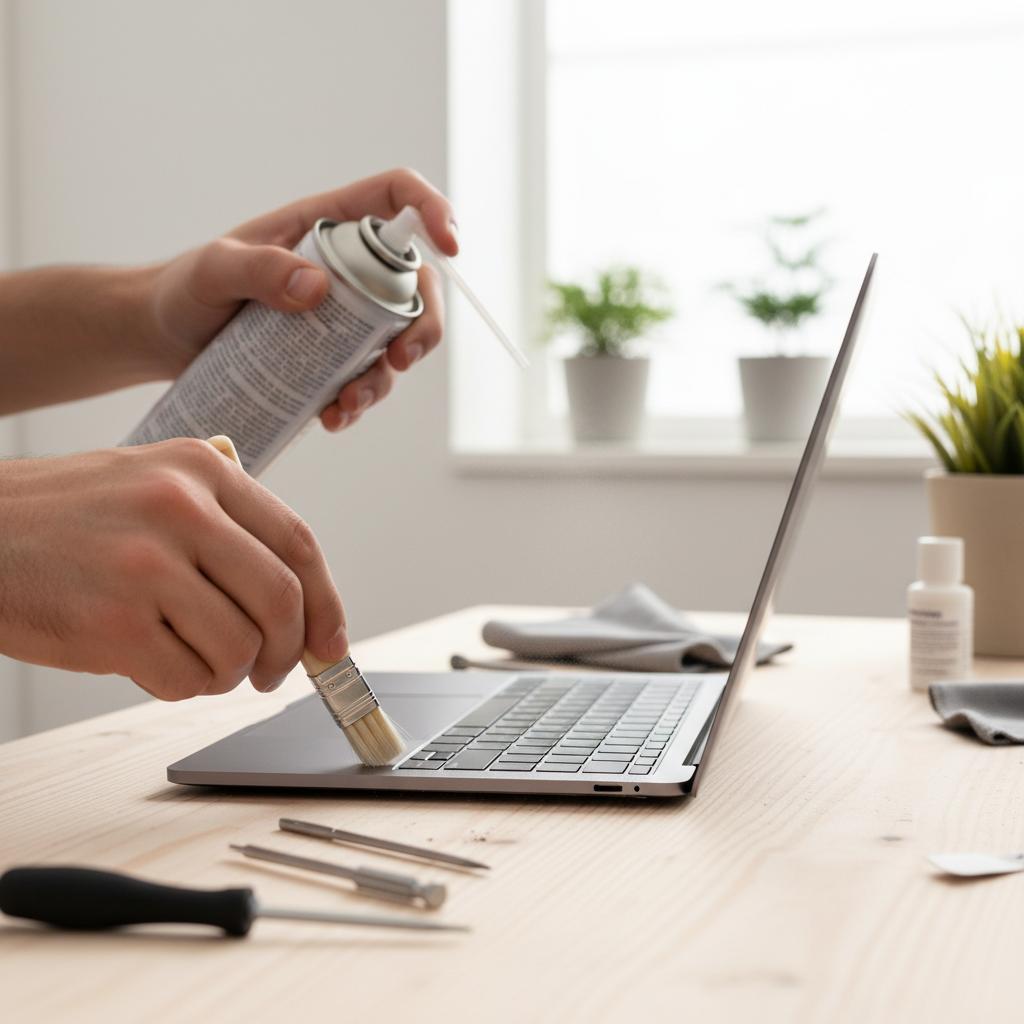
Table of Contents
Introduction
Picture this: you’re in the middle of an important presentation, and suddenly your laptop freezes. Dead. Or maybe your Bluetooth headphones just won’t connect, no matter how many times you try. Sound familiar? Nine times out of ten, the culprit hiding behind these tech nightmares is something most people ignore—outdated drivers. Here’s the thing though: keeping your laptop drivers updated isn’t just some nerdy maintenance task. It’s actually one of the smartest things you can do for your device’s performance and security.
Think of drivers as translators. They’re the behind-the-scenes heroes that help your laptop’s hardware talk to its operating system. When these translators get rusty or stop working properly, chaos ensues. Your system slows to a crawl, error messages pop up everywhere, and suddenly that printer or external monitor becomes as useful as a paperweight. But here’s where it gets interesting—when you keep drivers current, your hardware doesn’t just work better; it gets access to the latest security fixes and cool new features. Speaking of making your laptop work better, if you’ve been thinking about boosting performance, learning how to upgrade laptop RAM pairs perfectly with driver updates to give your system a real speed boost. And while we’re talking about maintenance, knowing how to properly care for your hardware—like cleaning charging ports—can prevent those frustrating issues that no software update can fix.
Now, let’s be real about something. Technology moves fast. Really fast. What worked perfectly six months ago might be struggling to keep up today. Driver updates aren’t just about fixing what’s broken—they’re about staying ahead of the curve. New features, better compatibility, enhanced security. It’s all connected to this massive tech evolution happening around us. Want proof? Just look at the latest technology trends in 2025. The pace of change is incredible, and your humble laptop drivers are your ticket to riding that wave instead of getting swept away by it.
But here’s what really should grab your attention: security. (And I’m not trying to scare you, just being honest.) Cybercriminals love outdated drivers because they’re like unlocked doors into your system. They actively hunt for these vulnerabilities to steal data or hijack devices. It’s gotten so serious that companies now train their employees specifically on these risks. If you’re curious about how deep this goes, check out cybersecurity training for employees—it’s eye-opening how much emphasis there is on keeping everything updated, including drivers.
What You’ll Learn in This Guide
Alright, so you’re convinced that driver updates matter. Great! But where do you even start? Don’t worry—I’ve got your back. This guide will walk you through everything, step by step, without drowning you in tech jargon. Here’s exactly what we’ll cover:
- Why Updating Drivers Matters: We’ll dig into the real reasons behind system crashes, security holes, and those annoying compatibility issues—plus show you how staying on top of updates keeps everything running like clockwork.
- Identifying Current Driver Versions: I’ll show you the easiest ways to check what drivers you have installed using tools you already own (like Device Manager) and some handy third-party options that make spotting outdated stuff a breeze.
- Updating Drivers Efficiently: Whether you prefer doing things yourself or want something more automatic, we’ll explore all your options—from manufacturer websites to Device Manager to specialized software. Plus, I’ll share the pros and cons of each method so you can pick what works for you.
- Troubleshooting and Maintenance Tips: When things go sideways (and sometimes they do), you’ll know exactly how to fix them. We’ll cover rolling back drivers, clean reinstalls, and smart prevention strategies to avoid headaches down the road.
By the way, mastering driver updates is just one piece of the puzzle. Learning skills like how to reset Bluetooth headphones and other connected devices will round out your tech toolkit and make you feel like you actually know what you’re doing with your gadgets.
Look, I get it. The whole driver update thing can feel overwhelming at first. There are tools to learn, decisions to make, and always that nagging worry about breaking something. That’s exactly why I’m breaking everything down into bite-sized, manageable steps. Whether you’re the type who likes to tinker with settings or you just want to set something up once and forget about it, you’ll find an approach that fits your style.
Ready to stop dealing with mysterious crashes and sluggish performance? Want to actually understand what’s happening under your laptop’s hood? Perfect. Let’s turn you into someone who not only gets why drivers matter but knows exactly how to keep them working for you instead of against you.

Look, keeping your laptop’s drivers updated isn’t just tech maintenance—it’s honestly one of the smartest things you can do for your computer. We’ve already talked about why this matters, but let’s get into the real reasons why skipping driver updates is basically asking for trouble. Here’s the thing: when your drivers are up to date, you’re not just preventing headaches. You’re actually making your laptop run better, stay safer, and work with all the latest software you want to use. And since your laptop is probably glued to your side most days (I get it), understanding how to manage these updates will save you from those “why is my computer acting weird?” moments.
Why You Should Update Laptop Drivers Regularly
Think of drivers as translators between your laptop’s brain (the operating system) and all its body parts (the hardware). When these translators get rusty? That’s when things go sideways. Your screen might start flickering. Audio could cut out mid-Zoom call. Your laptop might even decide to take random naps with those lovely blue screen crashes. Nobody has time for that drama.
But here’s what’s really interesting—updated drivers don’t just fix problems. They actually unlock new potential in your hardware. Take graphics drivers, for example. When NVIDIA or AMD releases an update, they’re often squeezing more performance out of the same hardware you already own. Pretty cool, right? Plus, every time Windows gets an update or you install new software, those programs expect to talk to the latest version of your drivers. Skip the updates, and you might find your favorite apps suddenly acting moody. That’s why staying on top of driver updates isn’t just about avoiding problems—it’s about getting the most out of what you paid for. If you’re curious about how hardware improvements work together, check out how hardware upgrades and compatibility enhancements work, which really shows why keeping everything current matters.
Key Reasons to Keep Drivers Updated
Here’s why this actually matters for your day-to-day computer life:
- Improved System Stability: No more random crashes during important presentations. Updated drivers fix bugs that cause your laptop to freeze or shut down unexpectedly, so your hardware and operating system actually play nice together.
- Enhanced Performance: Manufacturers are constantly tweaking their drivers to squeeze out better performance. We’re talking faster processing, smoother graphics, and more responsive keyboards and trackpads—basically, your laptop feeling snappier overall.
- Security Enhancements: This one’s huge. Outdated drivers are like leaving your front door unlocked for hackers. Security patches in driver updates close those gaps that malware loves to exploit, keeping your personal stuff safe.
- Compatibility with New Software: Want to use that new app everyone’s talking about? Updated drivers make sure it actually works on your laptop instead of throwing error messages or just refusing to launch.
Now that you know why this matters, let’s talk about the how. Because knowing you should update drivers is one thing—actually doing it safely and efficiently? That’s where it gets practical.
Methods to Check and Update Laptop Drivers Safely
Alright, so how do you actually tackle this without breaking anything? You’ve got options, and they range from “I want complete control” to “just make it work automatically.” Windows Device Manager is your go-to if you like doing things manually—it shows you exactly what’s installed and lets you update piece by piece. It’s perfect if you’re comfortable poking around in system settings, but it does require knowing what you’re looking for.
For most people, though, the sweet spot is using your laptop manufacturer’s own tools. Dell has SupportAssist, HP has Support Assistant, and so on. These aren’t just generic update tools—they know exactly what hardware is in your specific laptop model. That means no guessing games about compatibility, and you’re getting updates that have been tested with your exact setup. Whatever method you choose, here’s a pro tip that’ll save you major headaches: back up your system first. Seriously. Most driver updates go smoothly, but when they don’t, you’ll be thanking yourself for having that safety net.
Key Methods for Driver Management
Let’s break down your options for keeping everything current:
- Manual Driver Updates: Going straight to the manufacturer’s website gives you total control and peace of mind about getting authentic drivers. It’s the safest route if you don’t mind doing a bit of homework to make sure you’re downloading the right version for your specific hardware model.
- Automatic Driver Update Software: These tools scan your system and handle the downloading and installing for you. Super convenient, but stick with reputable names—some sketchy software out there disguises itself as driver updaters. Windows Update also does this automatically, though it sometimes lags behind the latest versions.
- Manufacturer-Branded Utilities: This is often your best bet. Laptop manufacturer software gives you updates specifically tested for your machine, plus they usually include diagnostic tools and customer support features. It’s like having a tech-savvy friend who knows your laptop inside and out.
- Rollback and Recovery Options: Sometimes even good updates cause weird issues. Learning how to roll back drivers in Device Manager and creating restore points before big updates are your insurance policies. When things go wrong (and occasionally they will), you can just undo the changes and get back to working normally.

Here’s the bottom line: keeping your laptop drivers updated isn’t just good practice—it’s essential. Think of drivers as translators between your hardware and software. When they’re outdated? Your laptop starts speaking in broken sentences. System slowdowns, security holes, and those maddening moments when your mouse just stops working—yep, outdated drivers are often the culprit. But here’s the good news: you now know exactly how to fix this.
We’ve covered everything from the manual approach (visiting manufacturer websites) to the convenient route (using dedicated software tools). You’ve learned about manufacturer utilities, troubleshooting tricks like driver rollbacks, and the art of the clean reinstall. Most importantly, you understand why a solid backup routine isn’t just recommended—it’s your safety net. Because let’s face it, nobody wants to be the person whose laptop won’t boot after a driver update gone wrong.
Ready to take your laptop maintenance to the next level? Driver updates are just the beginning. Consider upgrading your RAM next—it’s like giving your laptop a shot of espresso. This step-by-step guide on upgrading laptop RAM will show you how to boost multitasking power and overall speed. Don’t forget about the physical stuff either. Clean charging ports can prevent those “why won’t my laptop charge?” panic moments—learn how to clean your charging ports safely. And if your Bluetooth headphones are acting up (because they always do at the worst times), this guide to reset Bluetooth headphones will save your sanity. Speaking of protection, outdated drivers can create security vulnerabilities that hackers love to exploit. That’s why cybersecurity training for employees is more relevant than ever—because staying safe online starts with understanding the risks.
Look, updating drivers might seem like one of those tedious tech tasks you’d rather avoid. But think of it this way: five minutes of maintenance every few months can save you hours of frustration down the road. Your laptop isn’t just a machine—it’s your productivity partner, entertainment center, and connection to the world. Treat it right with regular updates, smart maintenance, and yes, those backups we keep mentioning. When issues pop up (and they will), don’t hesitate to get professional help. Your laptop will reward your attention with years of reliable service. And honestly? There’s something satisfying about a smoothly running machine that just works when you need it to.
Frequently Asked Questions
-
How often should I update my laptop drivers?
- Every few months is a good rule of thumb, or whenever you notice something acting weird—crashes, connectivity hiccups, or hardware that just won’t cooperate.
-
Can outdated drivers cause my laptop to crash?
- Absolutely. Old or incompatible drivers are like having a bad translator in a conversation—everything gets mixed up, leading to freezes, crashes, and general system chaos.
-
Is it safe to use third-party driver update software?
- Some are solid, others are sketchy. Stick with well-known, reputable tools and always research before downloading. The wrong software can do more harm than good.
-
What should I do if a driver update breaks my laptop?
- Don’t panic. Use Device Manager’s rollback feature to undo the update, or restore from a backup point. This is exactly why we always recommend backing up before updates.
-
Can Windows Update keep my drivers updated?
- It helps, but it’s not perfect. Windows Update provides basic driver updates, but manufacturers often release newer versions directly. Think of it as good coverage, not complete coverage.
